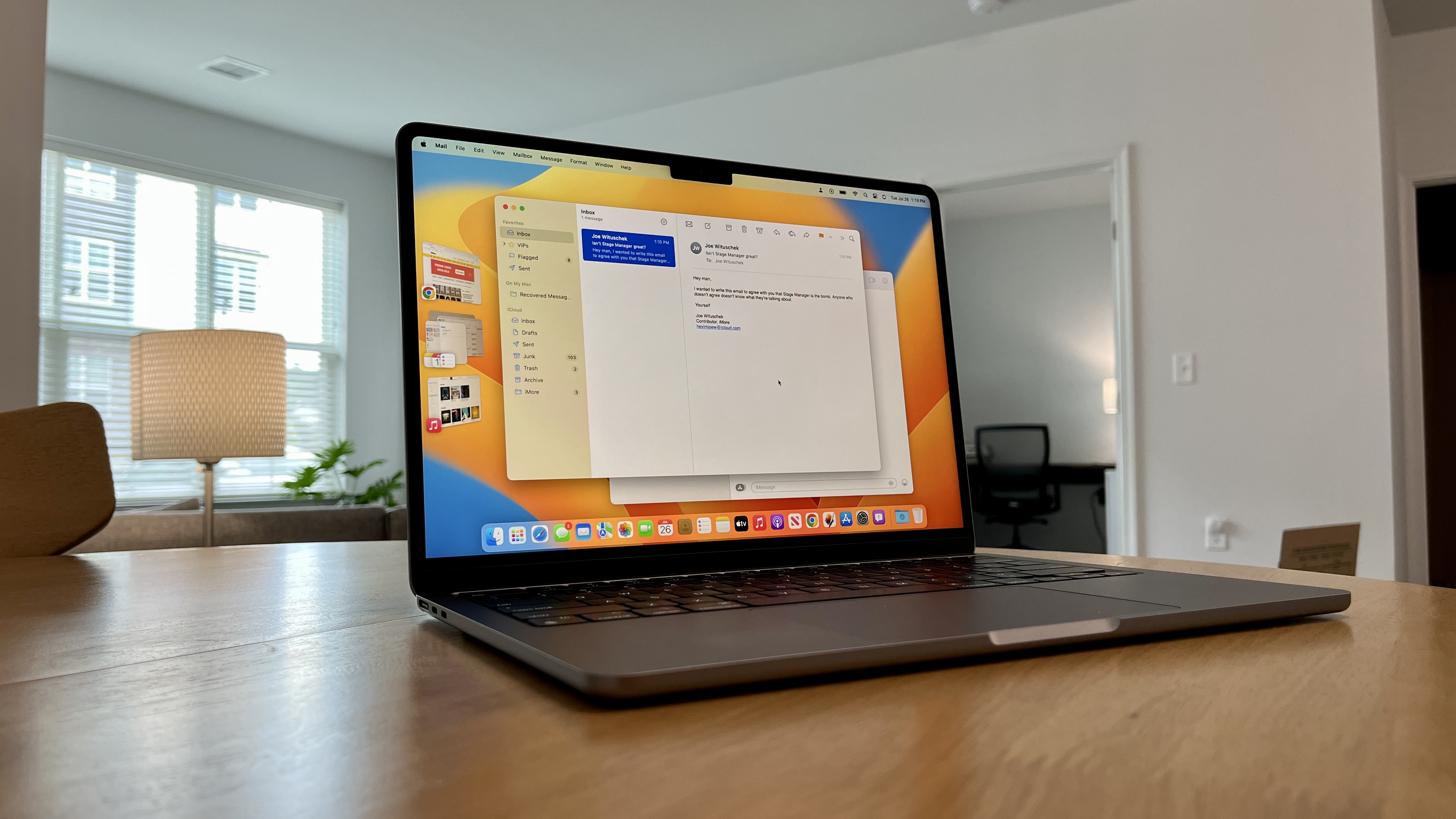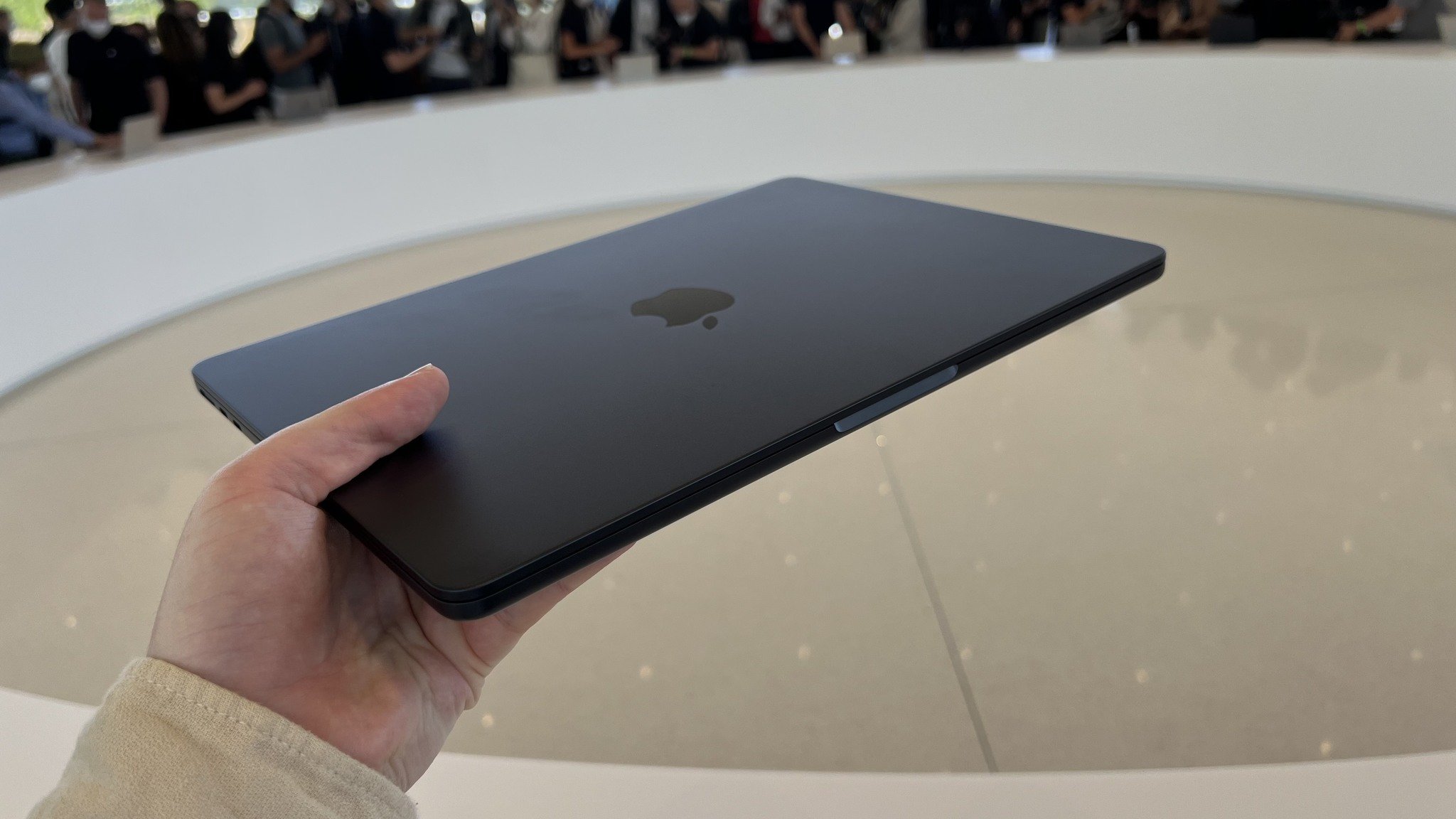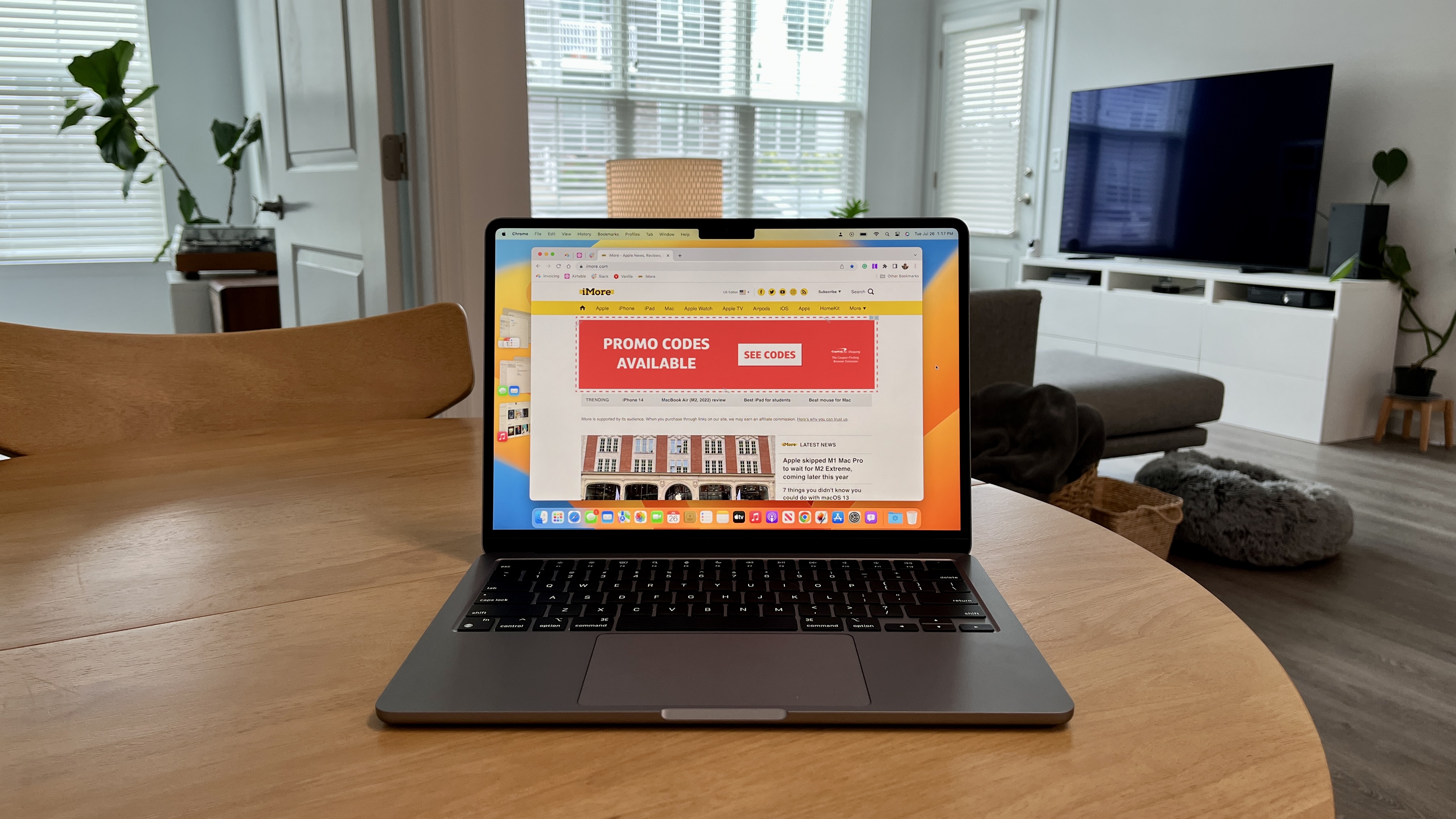I bought a base model M2 MacBook Air and you probably should too
It's still the Mac to get for most people.

When Apple announced the new MacBook Air with M2 chip, I was so excited that the company brought the new MacBook Pro design to the Air while, of course, making it even more compact and portable.
The design, display, and the triumphant return of MagSafe was enough to sway me to upgrade from my M1 MacBook Air (plus those full-size function keys!), but I was even more impressed with the performance upgrades with the M2 processor.
While I have already been experiencing performance bliss with the M1, when compared to my previous Intel chip, my MacBook Air would occasionally slow down when rocking multiple open windows and a flurry of tabs across Safari.
Though a lot of multitasking performance is dependent on how much RAM you have in your machine, the processor plays a role in that as well, and the M2 is a great performance bump for people like me who are more concerned with flying through Chrome tabs than Photoshop layers.
Tech YouTube strikes again!
Despite the base model looking perfect for my needs, the technology community seemed to lose its mind over that configuration for about a week once some reviewers pointed out that the storage in the base model MacBook Air with M2 are slower than the base model equivalent of the Macbook Air with M1 chip.
Reviewers rampaged against the base model for this reason alone, pointing out that its slower speeds was a reason for basically everyone to pay an extra $200 to upgrade to the 512GB storage option.
The "Don't buy the cheapest M2 MacBook Air" videos popped up all over the place and hence, the new MacBook Air found its drama for the tech community to pile on about.
Master your iPhone in minutes
iMore offers spot-on advice and guidance from our team of experts, with decades of Apple device experience to lean on. Learn more with iMore!

I remember watching the drama play out and actually start to be swayed towards upgrading both the RAM and storage in my machine, which quickly turned a $800 purchase (with my M1 MacBook Air trade-in) into a $1000, $1200, or even $1400 purchase.
After thinking about it, I remembered that I've been just fine with base model configurations for...well, forever. So I threw caution to the wind and bought the base model M2 MacBook Air in Space Gray. Here's what I found out.
But what about the slower storage?!
Here's the deal with the base model storage drama. With the M1 MacBook Air, the 256 SSD featured two 128GB NAND flash chips. With the M2 MacBook Air, Apple changed things up and, instead of using two 128GB NAND flash chips, it now only uses one 256GB NAND flash chip.
This is the same approach that Apple took with the base model 13-inch MacBook Pro with M2 chip, and both resulted in lower read/write speeds when compared to the previous version. If you really want to go deep into the technical side of this, iMore contributor Rene Ritchie has his usual deep dive into the issue:
Some reviewers pointed out this drop in performance as a reason to discard the base model M2 MacBook Air as a viable option, and instead encouraged users to pay an extra $200 to upgrade to the 512GB storage option, which does run two NAND flash chips.
As iMore Editor-in-Chief Gerald Lynch pointed out in his review of the M2 MacBook Air, most users will anecdotally not notice a difference, due to most people not running workflows that require high read/write performance from their SSD.
This is exactly the situation I experienced. If no one had told me that the SSD was slower, I wouldn't have noticed. And, now that I've known and have been looking for a difference, I've been unable to find any.
But what do you use your MacBook Air for?
As a contributor for iMore, I'm running the usual chaotic number of Chrome tabs, Mail, Notes, Reminders, and the occasional need for an Apple app. I'm also running the public beta of macOS Ventura to ensure I can cover all of the upcoming features.
Writing news does require the occasional photo or image edit. For that, I'll pop into Pixelmator Pro to make some basic adjustments. I also recently worked on some bezel templates for Apple products for us to use in our How To articles and anywhere else they might be handy. Those projects had plenty of layers and all kinds of effects on top of them.
Doing the occasional review, I also take photos with my iPhone and edit them right in the Photos app on the iPhone or the Mac. I may also record the occasional video and do some light editing in Photos or if I need to bring some clips together, hop into iMovie (sorry Clips).

Personally, I also enjoy using Garageband to play along with songs on Apple Music or try my hand at some basic songwriting to share with a few musician friends.
For all of these, the base model M2 MacBook Air has been stellar. I haven't noticed any performance drop or slowdown at any of these tasks. I don't need a ton of storage (thanks iCloud), and the extra RAM and graphics performance is lost on me. I imagine that goes for a lot of you, too.
If you are a true professional and need to be in Photoshop, Final Cut Pro, Logic, or any other app with a heavy workflow all day, every day, then the new MacBook Pro is there for you. And, if you are hoping between consumer and professional apps on occasion, Apple offers performance upgrades for the MacBook Air. if you land in this crowd, check out our MacBook Air vs MacBook Pro guide and Best MacBook of 2022 coverage.
However, for the rest of us, the base model MacBook Air is still the one to get.

Joe Wituschek is a Contributor at iMore. With over ten years in the technology industry, one of them being at Apple, Joe now covers the company for the website. In addition to covering breaking news, Joe also writes editorials and reviews for a range of products. He fell in love with Apple products when he got an iPod nano for Christmas almost twenty years ago. Despite being considered a "heavy" user, he has always preferred the consumer-focused products like the MacBook Air, iPad mini, and iPhone 13 mini. He will fight to the death to keep a mini iPhone in the lineup. In his free time, Joe enjoys video games, movies, photography, running, and basically everything outdoors.
